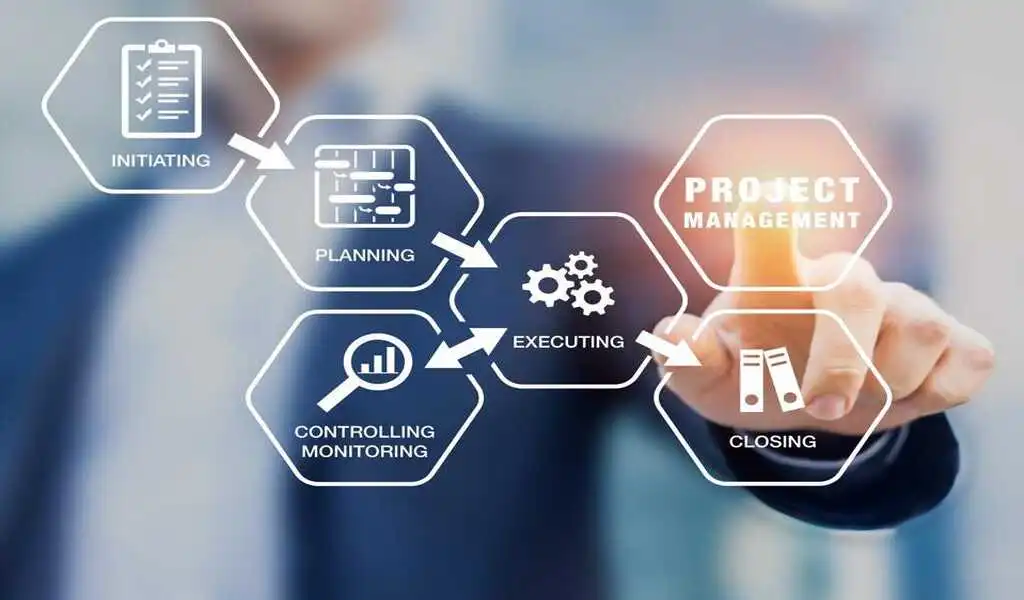Financial Project management is the approach of planning, handling, directing, and organizing a company’s financial resources. Proper financial project management needs steadiness at every step along the path. Thorough planning, record maintenance, and reporting are crucial components. Cost estimation through detailed financial planning is helpful in many ways.
There are multiple techniques to determine cost estimates. Here is a list of ten critical steps for precise project cost estimation. But, firstly, we will know more about project cost estimation and its importance in business.
What Is Project Cost Estimation?
Project cost estimation is the procedure that takes into account essential factors. These include direct costs, indirect costs, and other kinds of project expenses. It summarizes a budget that satisfies the financial commitment crucial for a flourishing project. To do this, project directors and project estimators work together. They use a cost breakdown structure to determine all the costs in a project.
Project cost estimation is an integral task. It ranges from making a bridge to completing that new killer project. Every step costs capital, so the more precise you are on the finance needed, the closer you and your team become to potential success.
Project cost estimation is a crucial step during the project planning stage. It assists project managers in developing a project budget that covers the project costs. This can be achieved with lumber takeoff software or a roofing estimate program. A cost estimation includes every penny required to achieve the objectives. Plus, it facilitates smooth project execution by managers and stakeholders.
How to Estimate Project Costs in Ten Steps
The project cost estimation experts have specified a ten-step process. This technique results in steadfast and accurate cost estimates for project management. Those steps are summed up below.
Determine the Cost Estimates Goal
Define the objective of the cost estimate. It includes the level of financial detail that is needed. Plus, who obtains the estimation and the across-the-board extent of the estimate.
Create an Estimating Plan
Develop a cost-estimating team and draft their estimation approaches. Evolve a timeline and specify who will conduct the independent cost estimate. Lastly, assemble the group according to the planned schedule.
Determine Characteristics
Bob Smith, Founder at Starlinkzone, said, “Produce a baseline description of the goal, strategy, and performance aspects. It incorporates every technology implication, system composition, and agenda. Moreover, you can also add techniques and connections to existing systems with other characteristics. Don’t overlook support, safety, risk items, trials, and production. Besides this, deployment, supervision, and any related legacy systems are also significant.”
Define Cost Estimating Techniques
Determine a work breakdown structure (WBS) for your project. Choose an estimating technique that’s adequate and best suited for each aspect of the WBS. Cross-check for expense and agenda drivers, then develop a checklist. There are multiple incredible cost estimation techniques. Let your cost estimation manager choose the one that suits your project the best for a successful result.
Remember Rules, Assumptions and Obtain Data
Wendy Wilhoit, Operations Manager at Brick Anew, said, “Ensure analyzing what’s included and left out from the estimate, and define specific assumptions. To start, learning the rules governing the estimation procedure is vital. These rules include standard methods and cost breakdown structures. Plus, approaches for data collection and estimation. Moreover, constant updates of these aspects as the project advances are essential for accurate cost estimates. “
Develop a Point Estimate
Generate a cost model by calculating each work breakdown structure (WBS) element. It depends on several factors: labor, vendor, equipment, and material. Plus, it includes a thorough analysis of every expense linked to WBS.
To create a detailed cost model, check each WBS element’s direct and indirect costs. Indirect costs include fees like executive overheads, contingencies, and potential threats. These indirect expenses are often issued across various aspects. Its allocation relies on their influence and relevance to each.
Conduct a Sensitivity Analysis
Test the sensitivity of expenses to do modifications in estimating input values. Plus, it also affects critical assumptions and identifies vital cost drivers. It strives to determine key cost drivers and their impact on the estimated budget. You can assess their influence on project cost by changing input values and assumptions.
These factors include labor rates, material expenses, duration, or productivity status. For example, raising the cost of raw materials or delaying project fulfillment might impact the budget. Besides this, it enables and empowers efficient decision-making and resource allocation.
Conduct Risk and Uncertainty Analysis
Te Wu, CEO of PMO Advisory, said, “Define the cost, plan, and technical troubles innate with each item on the WBS. Plus, determine how to manage these risks. Governing these troubles involves a proactive technique. Setting aside emergency funds for cost hazards might mean setting aside emergency funds for cost hazards.
Incorporate buffer time into the plan to remove delays. It is also helpful for plan fall backs because of technical delays. Regular monitoring and inspection of troubles throughout the project assure adaptability. It assists in dealing with emerging challenges and encourages timely adjustments.”
Document the Estimate and Share it with the Management Team.
Documentation of every step helps with many challenges during and after project completion. Keeping each step of the project cost documented ensures everyone is on the same page. Make sure the team responsible for cost estimation knows their duties and responsibilities. So, you can report to the project shareholders on cost estimates to obtain their approval.
Update the Cost Estimate
Any differences in the cost estimate must be revised and reported. Regular communication and transparency are vital for this step. Also, conduct a postmortem where you can report lessons learned. It helps as a chance to document beneficial insights. It includes successes, challenges encountered, and lessons learned throughout the project lifecycle. Jotting down these lessons learned involves outlining what worked well. Plus, what could have been made better, and any unforeseen challenges faced.
Incredible Key Techniques for Accurate Financial Planning
Adequate cash management will benefit your company to make practical use of resources. It allows businesses to fulfill project commitments. Plus, get a competitive edge and prepare for long-term financial stability. Financial management should be an integral part of your business strategies. Plus, it should be incorporated into your ongoing planning.
You might think your finances are complex and disorganized but don’t worry. We have jotted down the following ten tips to help you gain custody of your finances.
Develop a Comprehensive Budget
Creating a thorough budget is the basis of adequate financial planning. Begin by assessing your previous financial data to recognize patterns and trends. Classify your expenditures into various categories.
It includes personnel costs, marketing costs, and software subscriptions. Plus, it also provides office rent and other overhead expenses. Evaluate both fixed and varying prices. With a thorough budget in place, you can assign resources better. It is helpful to make informed decisions considering investments and cost-cutting measures.
Establish Realistic Revenue Projections
Precise revenue forecasting is necessary for financial planning. Assess your recorded revenue data and pinpoint any seasonal or cyclical patterns. Consider your marketing approaches, client investment rate, and anticipated market trends. Establishing realistic revenue projections can help you aim for financial objectives.
Plus, align your resources in adherence to your goals and record. It also permits you to recognize potential revenue voids in advance. Take proactive actions to bridge these gaps and generate more revenue in the future.
Track Key Financial Metrics
Observing critical financial metrics to maintain a helpful finance plan is significant. For instance, some vital metrics include client acquisition cost (CAC), average income per consumer, customer lifetime value (CLV), and gross margin.
Observing these metrics allows you to determine areas of improvement. Besides this, it facilitates optimizing your pricing plans and informed decisions for profitability.
Implement Adequate Cash Flow Management
Cash flow management is essential for the sustainability of any corporation. To ensure a swift cash flow, consider the following methods:
- Instant invoice and follow-up on outstanding payments.
- Negotiate payment policy with consumers to align with your cash flow requirements.
- Create a cash reserve to fill in unforeseen expenses or revenue voids.
- Facilitate your accounts receivable and payable procedures for efficiency.
Follow Rules And Manage Taxes
Enabling businesses to sustain their books and decreasing tax burden is essential. Keeping proper accounts is very crucial for all corporations. It will benefit to follow rules and make tax calculations manageable. Finance departments also assist in figuring out tax amounts, due dates, and paid amounts. They also benefit from finding legal ways to decrease a company’s tax obligation.
Regularly Review and Adjust Financial Plans
Strategic financial planning is not a one-time job. It needs regular inspection and change to adapt to developing business conditions. Schedule periodic economic assessments to check your firm’s performance.
It allows you to accomplish the set objectives and recognize areas that need modification. Stay updated with industry developments, market shifts, and updates that may influence your financial plans. Modify your approaches accordingly to sustain a competitive edge and assure financial stability.
Conclusion
Influential financial planning is essential for business owners to accomplish long-term success. Firms can enhance profitability by developing a detailed budget, finding realistic revenue projections, and monitoring fundamental financial metrics. Implementing cash flow management techniques, regular reviews, and financial plan adjustments can help govern resources efficiently.
Besides this, it positions businesses for sustainable growth in the long term. Prioritizing financial planning assures the financial soundness of your corporation. It allows you to concentrate on delivering extraordinary services to your consumers. Plus, staying ahead in a competitive marketing landscape.
⚠ Article Disclaimer
The above article is sponsored content any opinions expressed in this article are those of the author and not necessarily reflect the views of CTN News











